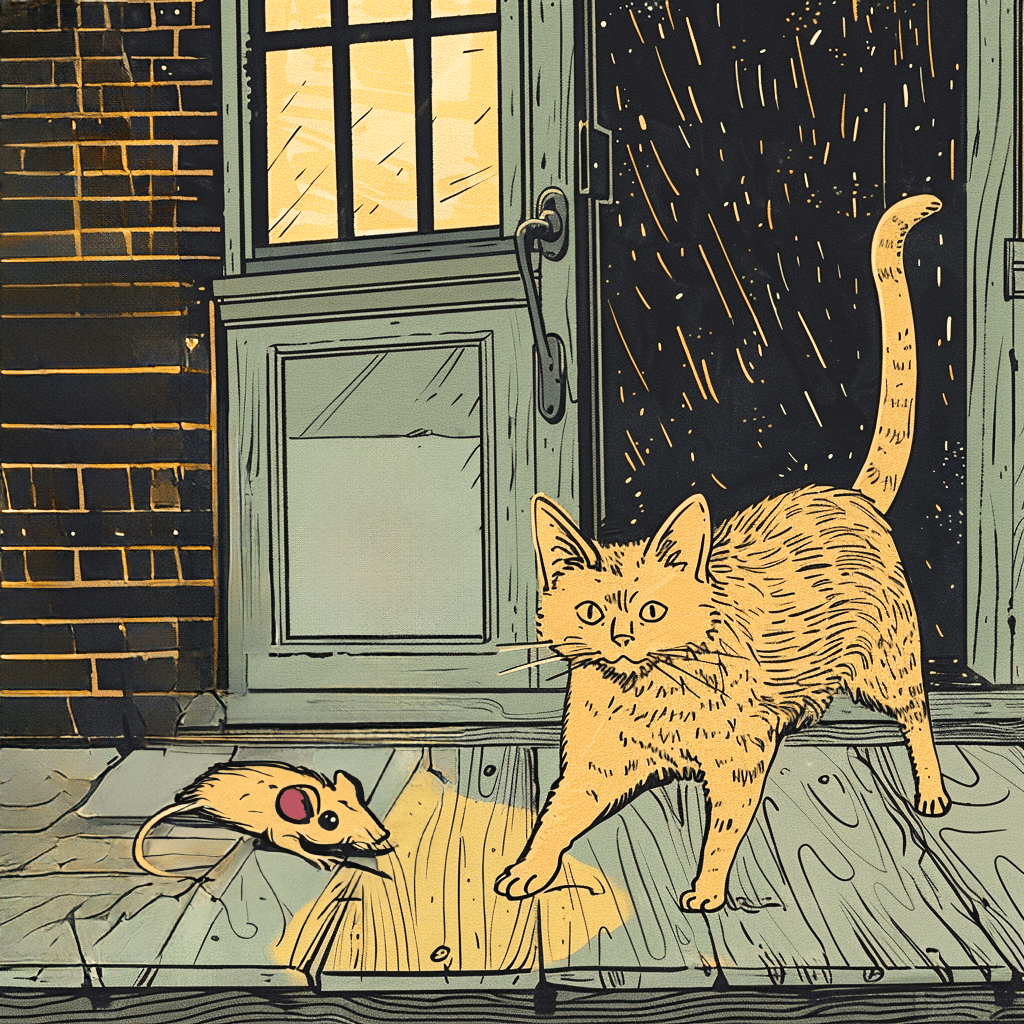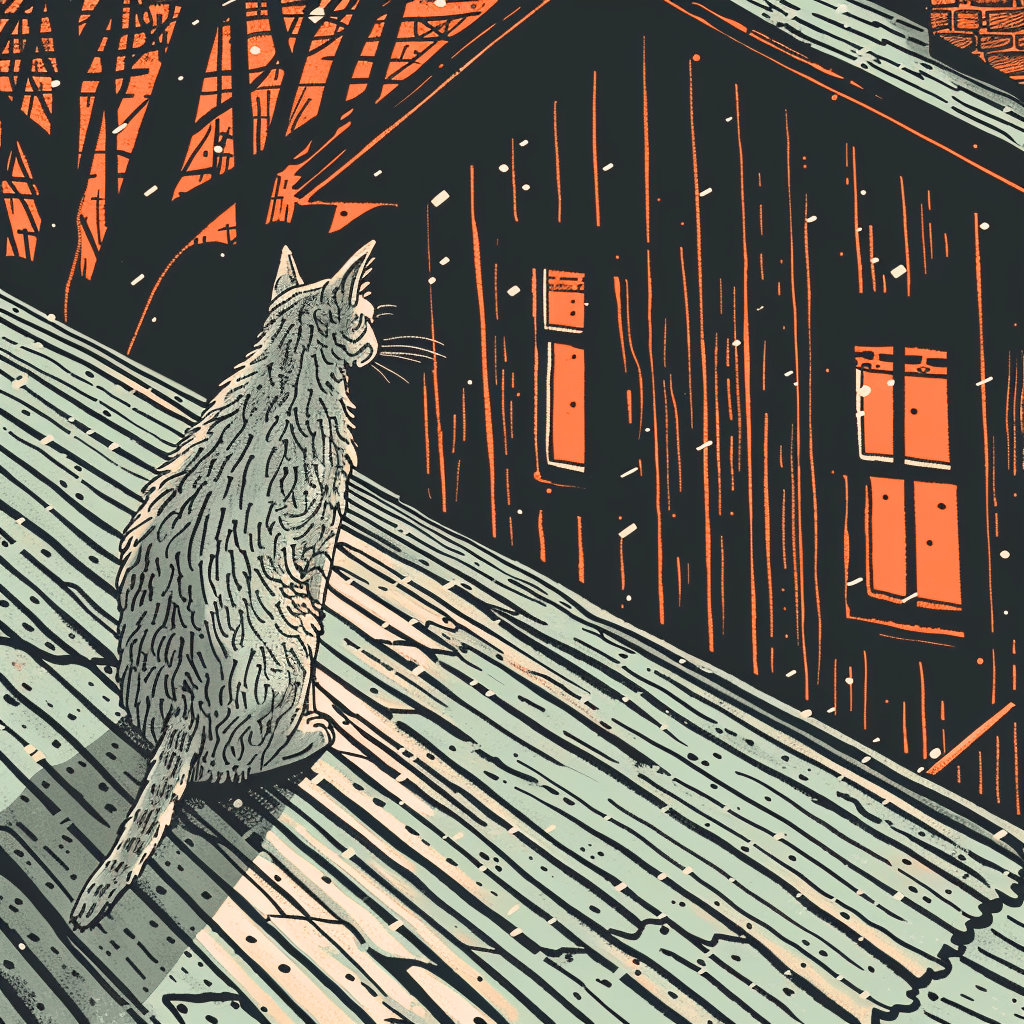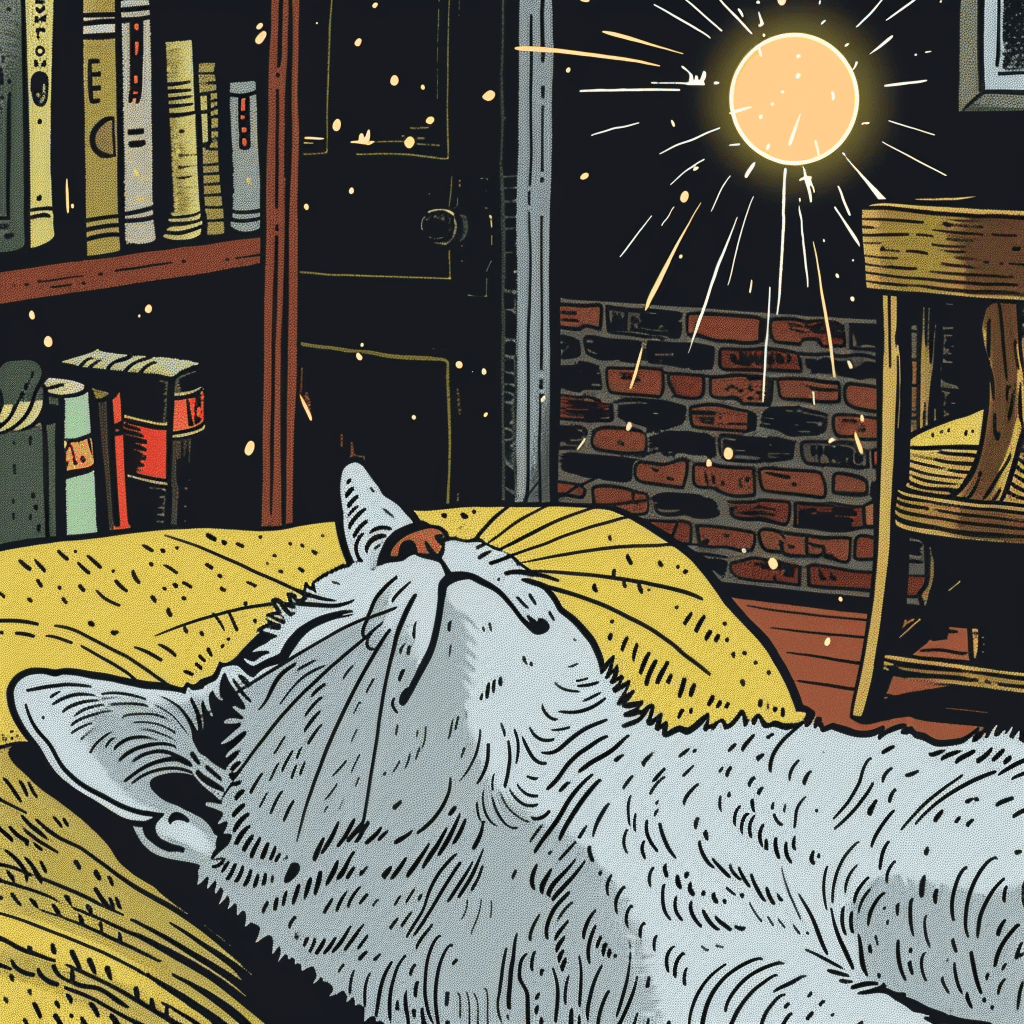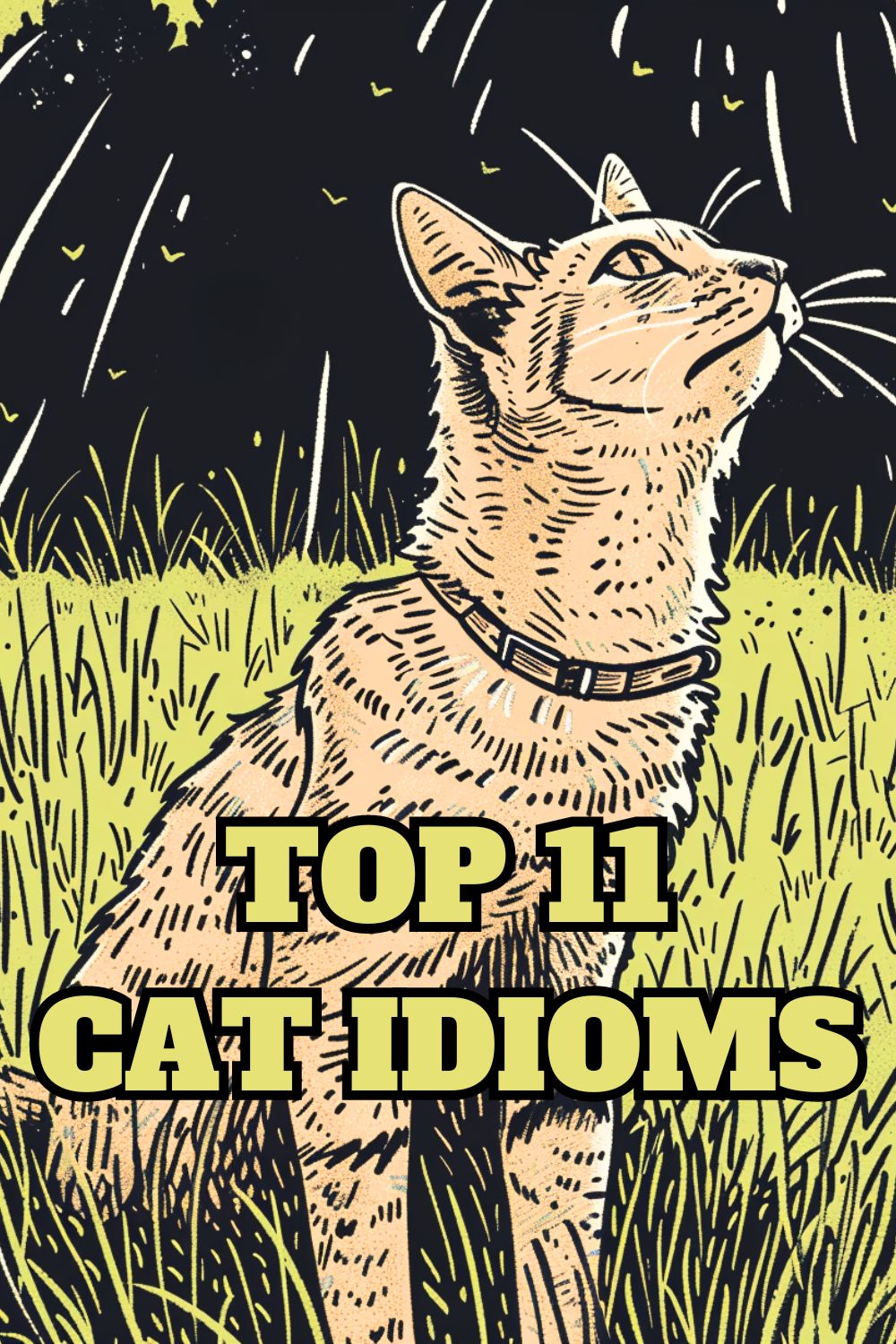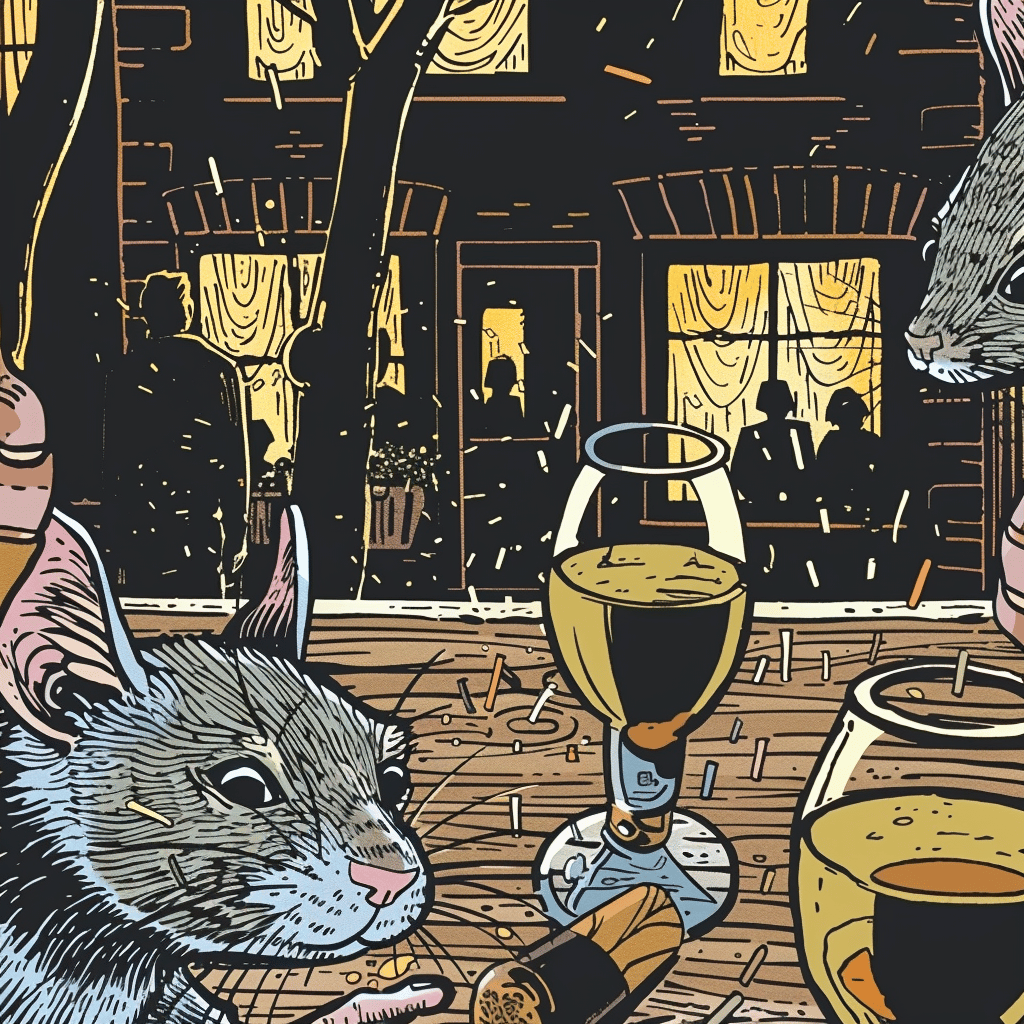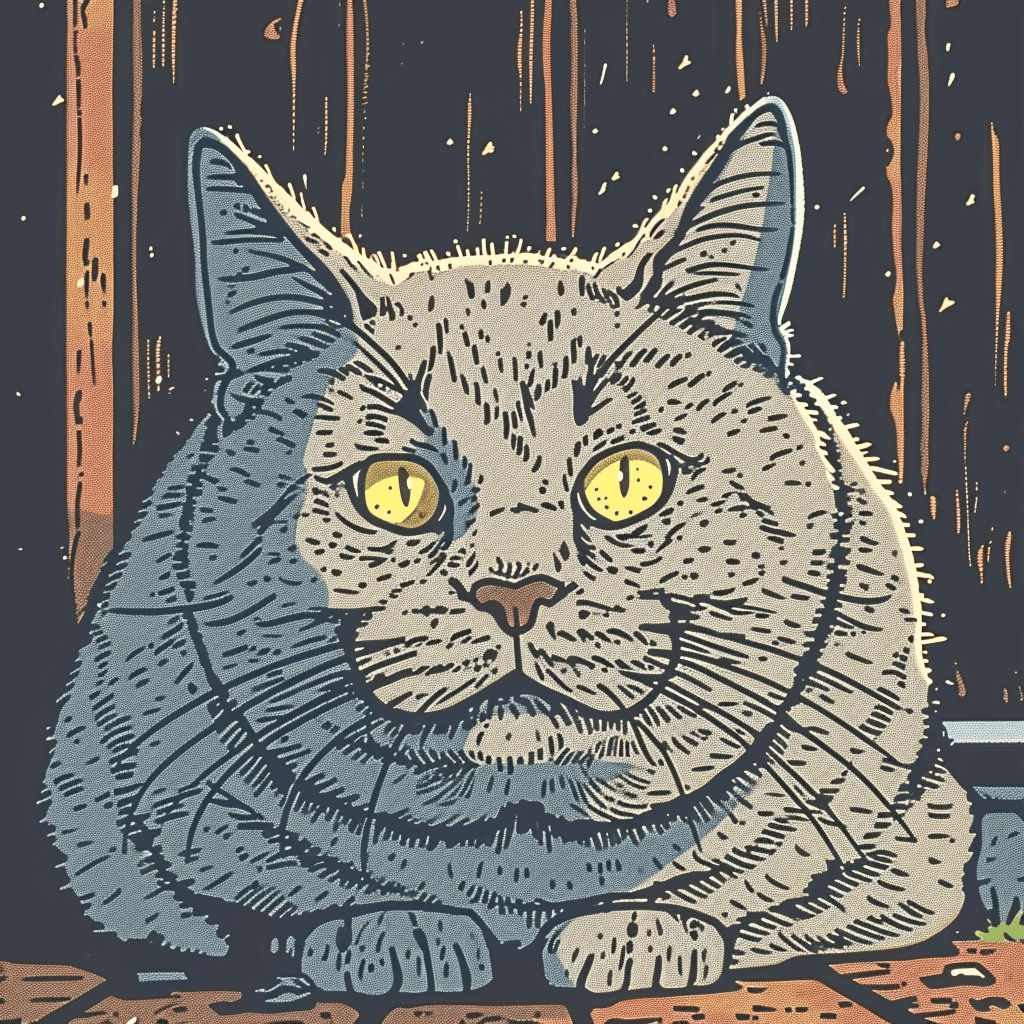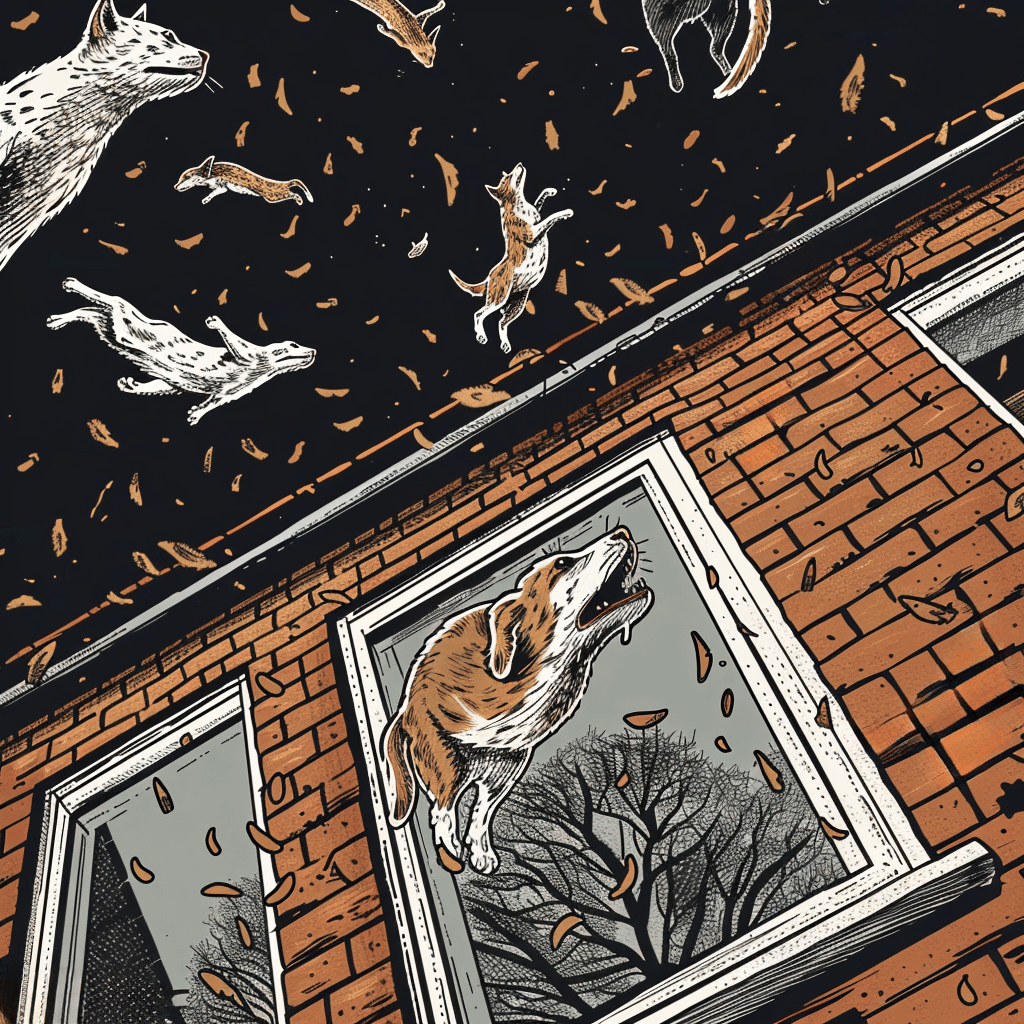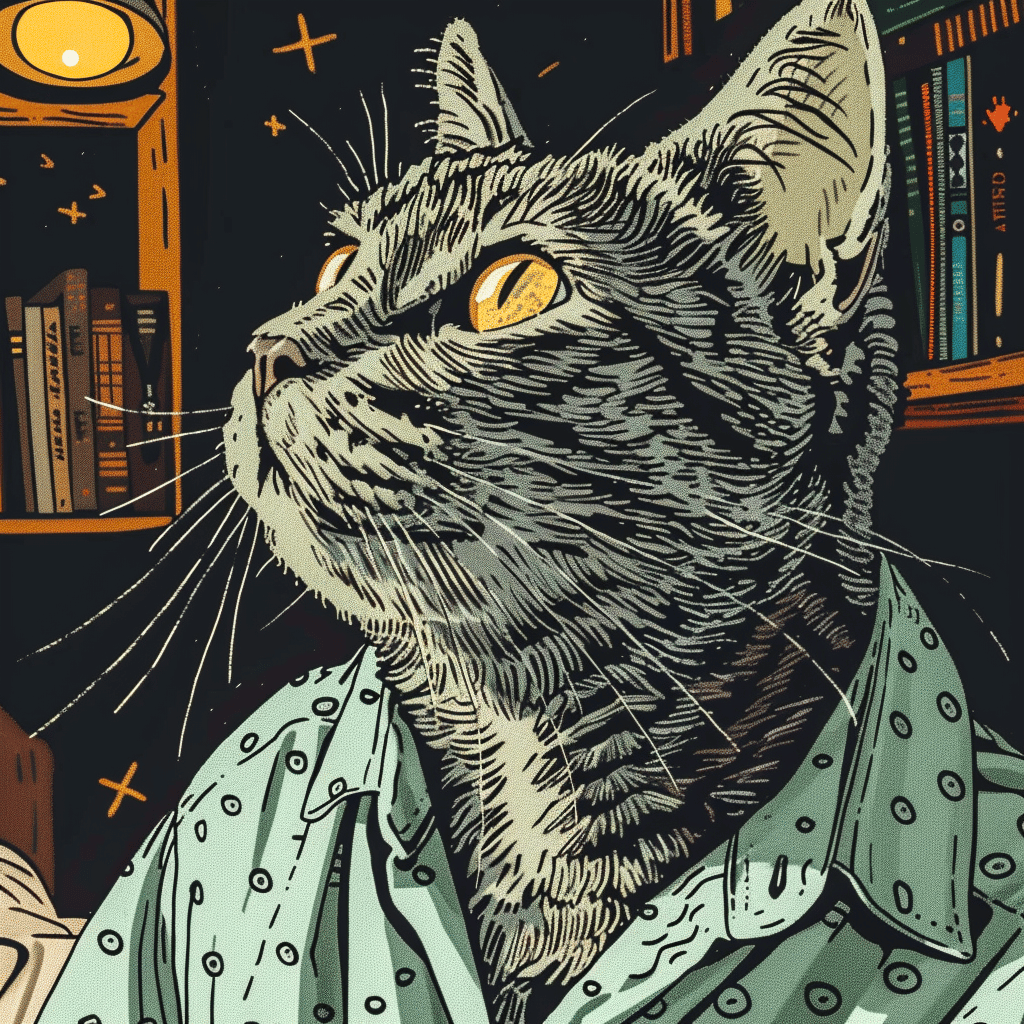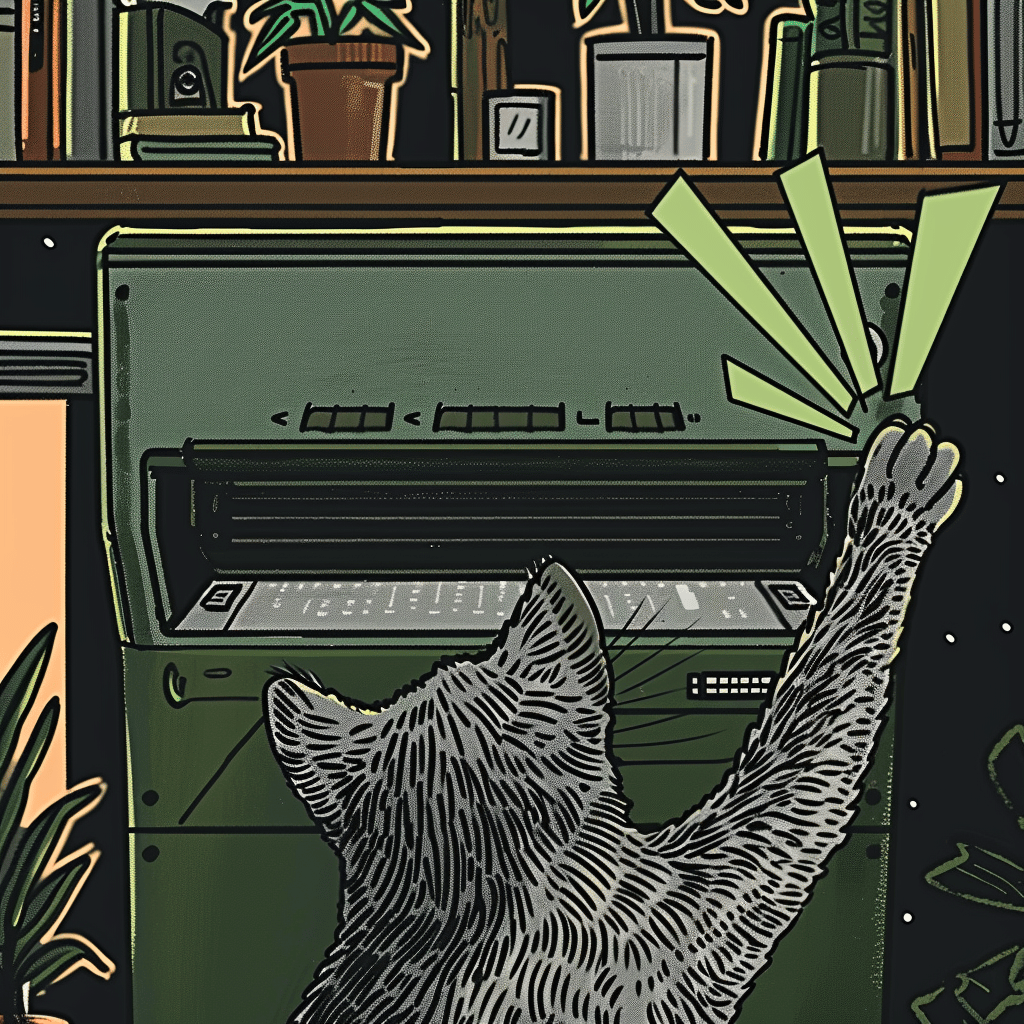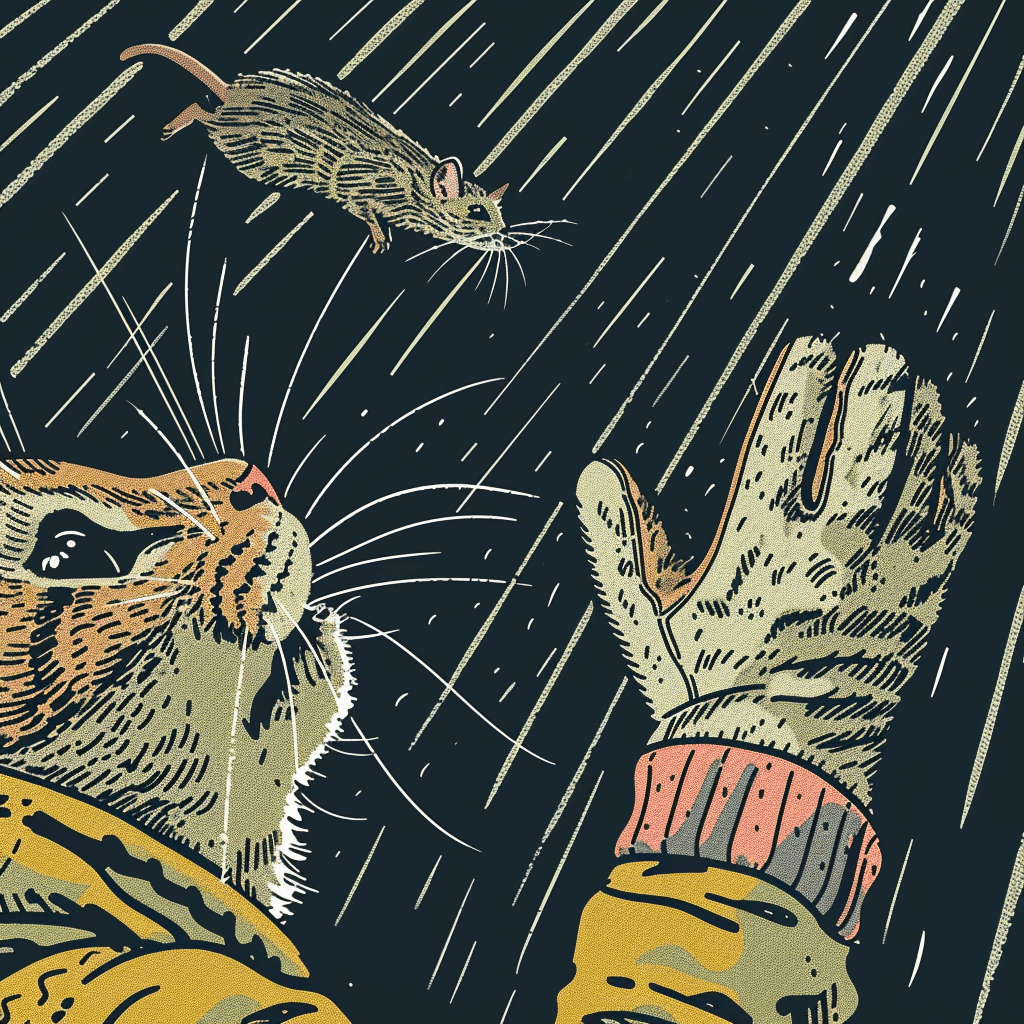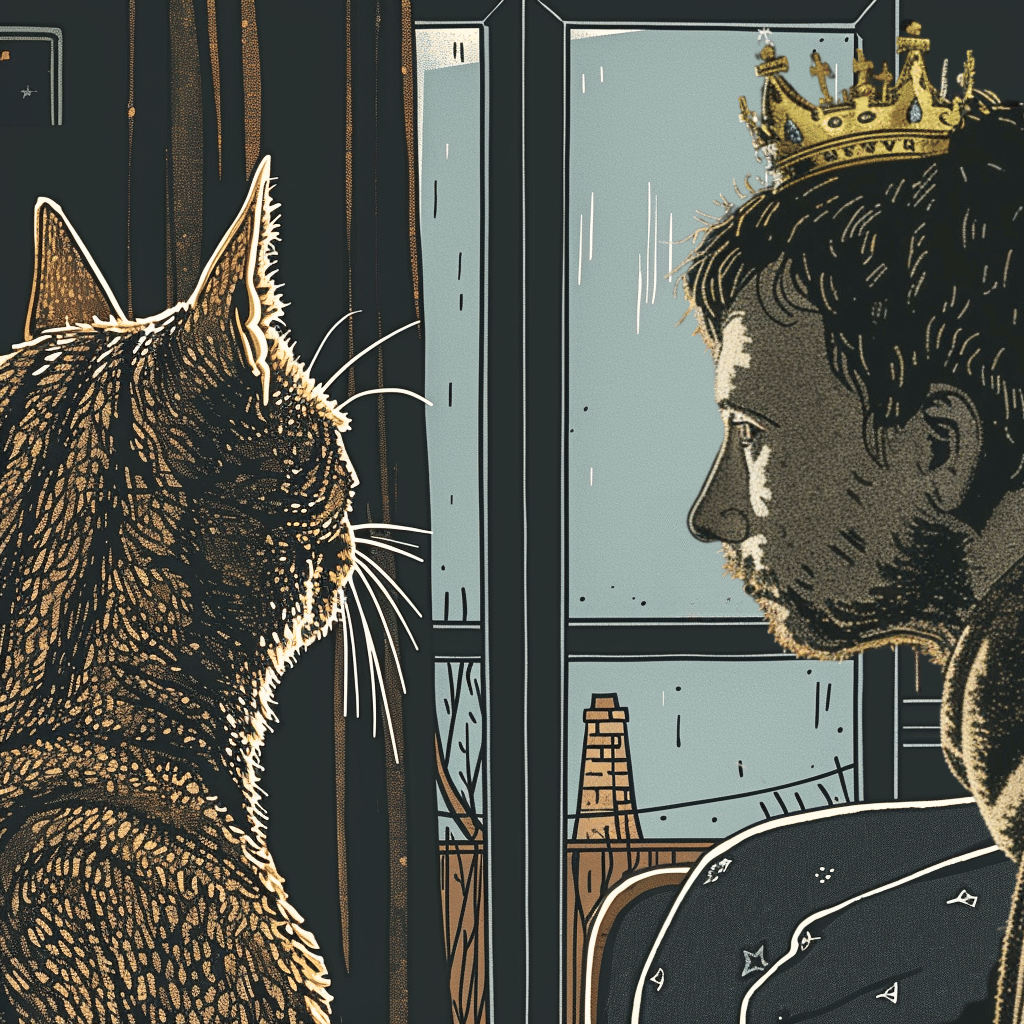Cats aren’t just beloved pets; they’re also a source of inspiration for many expressions in the English language.
Whether you’re a cat enthusiast or simply love enriching your vocabulary, understanding cat idioms can add depth and fun to your daily conversations.
From expressions of curiosity to phrases describing the weather, cats have surprisingly pawed their way into our language.
Here’s a compilation of 11 cat idioms every cat lover should or even must know, complete with their meanings and examples of use.
Dive into the feline world of idioms and make your language as captivating as the creatures that inspired them.
1. Look what the cat dragged in
The idiom “Look what the cat dragged in” is typically used in informal settings, often among friends or family members, to lightly tease someone who looks untidy or has made an unexpected appearance.
It’s mostly employed in a playful, affectionate manner, avoiding situations where the comment could be taken as genuinely insulting.
This expression humorously likens the arrival or condition of a person to that of a cat’s prey, whimsically brought back home.
Its origins trace back to the unpredictable nature of cats, often surprising their owners with their findings.
Utilizing this idiom fosters a lighthearted atmosphere, inviting a chuckle or a smile, which can serve as an icebreaker or a gentle way to acknowledge someone’s presence.
It encapsulates the spirit of camaraderie and the shared understanding that, despite appearances or circumstances, the individual is a welcomed and valued part of the group.
- Example 1: When Mark arrived at the party soaked from the rain, Sarah laughed and said, “Look what the cat dragged in!”
- Example 2: After finishing his marathon, Jamie walked into the house, and his mom exclaimed, “Look what the cat dragged in! Go get cleaned up.”
2. Curiosity killed the cat, satisfaction brought it back
“Curiosity killed the cat, satisfaction brought it back” is a cautionary phrase warning against the dangers of unnecessary investigation or prying into matters that don’t concern one, yet also highlights the redeeming power of finding the answers one seeks.
It is often used when curiosity might lead to harm or trouble, advising restraint and caution, but also acknowledges that finding out the truth can sometimes negate the risks taken.
This idiom is commonly utilized by individuals of all ages to remind others, especially the naturally curious or those inclined towards risky inquiries, of the potential consequences of their actions and the satisfaction that can come from quenching their curiosity.
The warning and reassurance embedded in “Curiosity killed the cat, satisfaction brought it back” serve as a timeless reminder of the potential pitfalls of excessive nosiness or meddling and the potential rewards.
This idiom, with its roots in cats’ inherently curious nature, cautions against the risk of unwanted consequences when prying too deeply into affairs but also celebrates the virtue of curiosity and the joy of discovery.
It underscores the virtue of discretion and the wisdom in sometimes choosing to remain uninvolved or uninformed about matters that don’t directly concern us, while also acknowledging the human nature to seek knowledge and understanding.
Through its use, the speaker imparts advice that balances curiosity with caution, aiming to protect from the unforeseen troubles that might arise from unwarranted inquisitiveness, yet also encourages the pursuit of knowledge and the fulfillment it brings.
Example 1: I know you want to know what’s in that sealed box, but remember, curiosity killed the cat, satisfaction brought it back.
Example 2: He couldn’t resist snooping around the abandoned house, even though his friends warned him, “Curiosity killed the cat, satisfaction brought it back.
3. A cat on a hot tin roof
“A Cat on a hot tin roof” describes someone extremely nervous, anxious, or unable to stay still, similar to how a cat would behave on a hot surface.
It is used in palpable tension or discomfort, particularly when someone feels under pressure or in an awkward position.
This idiom is often employed by speakers to convey a sense of empathy or understanding towards someone’s restless state, mostly in casual or personal discussions.
Originating from Tennessee Williams’ famous play, which uses the phrase as its title, the idiom has since permeated popular culture, symbolizing the universal struggle against anxiety and the human desire for relief.
It vividly illustrates the unease and agitation one might feel, offering a relatable metaphor for expressing complex emotions in simple terms.
- Example 1: Ever since the audit was announced, the manager has been like a cat on a hot tin roof.
- Example 2: Waiting for her exam results, she felt like a cat on a hot tin roof.
4. Cat nap
“Cat nap” refers to a short, light sleep, similar to the brief naps cats are known for.
This idiom is used in contexts where someone needs a quick rest to rejuvenate, especially when time is limited.
It’s commonly used among people of all demographics, particularly those with busy lifestyles or those trying to convey their need for a brief pause without committing to a long sleep.
The concept of a “cat nap” mirrors the instinctual pattern of rest observed in felines, who are adept at conserving energy through short spells of sleep.
This practice, when adopted by humans, highlights the efficiency of interspersing periods of activity with rest, rather than pushing through fatigue.
It promotes the idea that productivity does not solely come from continuous work but also from well-timed breaks that allow for mental and physical recovery.
By taking a “cat nap,” individuals can boost their alertness and performance, making it a wise choice for those seeking to maximize their day without overextending themselves.
- Example 1: I just need a quick cat nap before we go out tonight.
- Example 2: During the long drive, he pulled over for a cat nap to refresh himself.
5. When the cat’s away, mice will play
“When the cat’s away, mice will play” implies that in the absence of supervision, people will indulge in whatever behavior they please, often mischievously.
This idiom is used in contexts involving authority figures and their subordinates, highlighting the natural tendency to relax discipline when not being watched.
It is predominantly used by those in supervisory roles or observers commenting on such dynamics.
The saying taps into the universal truth that individuals may exhibit different behaviors when they know they’re not under direct observation, suggesting a playful bending of rules or norms to suit one’s immediate desires.
It reflects a deep understanding of human nature, acknowledging the freedom and relief felt when the usual constraints are temporarily lifted.
This idiom serves not only as a commentary on behavior in the absence of authority but also as a reminder of the importance of trust and responsibility in maintaining order and harmony in various settings, from the workplace to the home.
- Example 1: The kids always eat candy before dinner when their mom is away. When the cat’s away, mice will play.
- Example 2: As soon as the boss left early, the office atmosphere relaxed. When the cat’s away, the mice will play, after all.
6. Fat cat
“Fat cat” is a critical term for a wealthy, often influential person, suggesting a comfortable lifestyle at the expense of others.
It is used in discussions concerning economic inequality, corporate greed, or political power, usually by those critical of the status quo or highlighting disparities.
This idiom is mostly used by adults in political, social, or economic debates.
The term “fat cat” evokes imagery of excess and opulence, drawing a stark contrast between the affluent few and the general populace.
It often carries a negative connotation, implying not just wealth but a kind of wealth seen as unearned or undeserved, especially when it’s perceived to be gained at the cost of the wider community’s well-being.
This idiom challenges the fairness and ethics of power distribution in society, sparking conversations about the moral responsibilities of those in positions of wealth and influence.
By using this phrase, speakers can succinctly critique systems and individuals that perpetuate inequality, urging a reevaluation of societal values and priorities.
- Example 1: That fat cat CEO earns more in a day than we do in a year.
- Example 2: Politicians are just fat cats looking out for their interests.
7. Raining cats and dogs
“Raining cats and dogs” is an idiom used to describe very heavy rainfall. It is often employed in casual conversation, often as a colorful way to describe stormy weather conditions.
It is universally used by speakers of all ages, especially in informal settings or when discussing the weather in a more vivid, imaginative manner.
This vivid expression paints a picture of an intense downpour with such vigor and intensity that it humorously exaggerates the scene as if cats and dogs were literally falling from the sky.
Its origins are somewhat murky, with various theories suggesting connections to Norse mythology, medieval superstitions, or the once-common sight of animals hiding in thatched roofs during storms.
Regardless of its beginnings, the phrase “raining cats and dogs” encapsulates the human tendency to use creative language to describe the natural world.
It serves not only to communicate the severity of the weather but also to add a touch of whimsy and levity to the often dreary experience of enduring a storm.
- Example 1: You should wait until it stops raining cats and dogs before you leave.
- Example 2: We were soaked through; it was raining cats and dogs all day.
8. The cat’s pajamas
“The Cat’s Pajamas” means something that is excellent, high-quality, or impressive.
This idiom is used in contexts of approval or admiration, often to describe something or someone that stands out positively.
It is favored by people looking to express their enthusiasm or approval in a quaint, somewhat nostalgic manner across a wide range of conversations.
Originating from the jazz age in the 1920s, “the cat’s pajamas” belongs to a class of colorful expressions that emerged during a time of cultural vibrancy and change, capturing the exuberant spirit of the era.
The phrase conveys a sense of exceptionality and excitement, reflecting the novelty and innovation that characterized the Roaring Twenties.
Using “the cat’s pajamas” today evokes a playful acknowledgment of excellence, carrying a retro flair that adds character to modern praise.
It’s a whimsical way to commend advancements, achievements, or simply things that bring joy, imbuing everyday language with a touch of historical charm and lightheartedness.
- Example 1: Have you seen her new car? It’s the cat’s pajamas!
- Example 2: This new phone model is the cat’s pajamas; it has everything I need and more.
9. Copycat
“Copycat” refers to someone who imitates or copies another’s actions, style, or ideas.
It is used in situations where originality is expected or valued, pointing out a lack thereof.
This term is commonly used among children and adults alike, particularly in educational or creative contexts, to address or discourage the act of imitation.
The term “copycat” emphasizes the importance of authenticity and innovation, serving as a gentle reprimand to encourage individuals to develop their own ideas and approaches.
It highlights the fine line between being inspired by others and outright duplicating their work, fostering a culture that celebrates unique contributions and creative thinking.
In the realm of learning and creativity, being labeled a “copycat” can spur individuals to explore their personal potential and discover their original voice, thus enriching their work and the broader community with fresh perspectives and ideas.
- Example 1: Don’t be such a copycat; find your own style.
- Example 2: He was labeled a copycat by his classmates for always using their answers on tests.
10. A cat in gloves catches no mice
“A cat in gloves catches no mice” implies that being too cautious or polite can prevent one from achieving one’s goals.
It is used in contexts encouraging more direct action or assertiveness, particularly when caution is deemed an obstacle to success.
This idiom is often utilized by individuals advocating for a proactive approach, especially in business or personal development discussions.
This proverbial saying serves as a metaphor for the necessity of shedding one’s inhibitions or reservations to grasp opportunities effectively.
In essence, it suggests that success requires a degree of boldness and directness that might not always align with overly cautious or meticulously polite behavior.
Drawing on the predatory nature of cats, who must rely on their instincts and direct action to catch their prey, the idiom encourages a similar approach in human endeavors.
It champions the idea that to achieve significant results, one must sometimes abandon the “gloves” of hesitancy and embrace a more hands-on, assertive strategy.
This expression endorses the virtues of taking calculated risks and being assertive in pursuing objectives, reminding us that timidity can often be the biggest barrier to achieving our goals.
- Example 1: If you want to make it in this industry, you can’t be a cat in gloves; you’ve got to go after what you want.
- Example 2: She realized that by being a cat in gloves, she was missing out on opportunities at work.
11. A cat may look at a king
- Example 1: Just because he’s the boss doesn’t mean I can’t disagree with him. A cat may look at a king.
- Example 2: She felt intimidated in the luxurious store, but then she remembered, a cat may look at a king, and walked in confidently.
Purring with Purpose: The Whiskered Wisdom in Our Words

Hey fellow Linguaholics! It’s me, Marcel. I am the proud owner of linguaholic.com. Languages have always been my passion and I have studied Linguistics, Computational Linguistics and Sinology at the University of Zurich. It is my utmost pleasure to share with all of you guys what I know about languages and linguistics in general.


